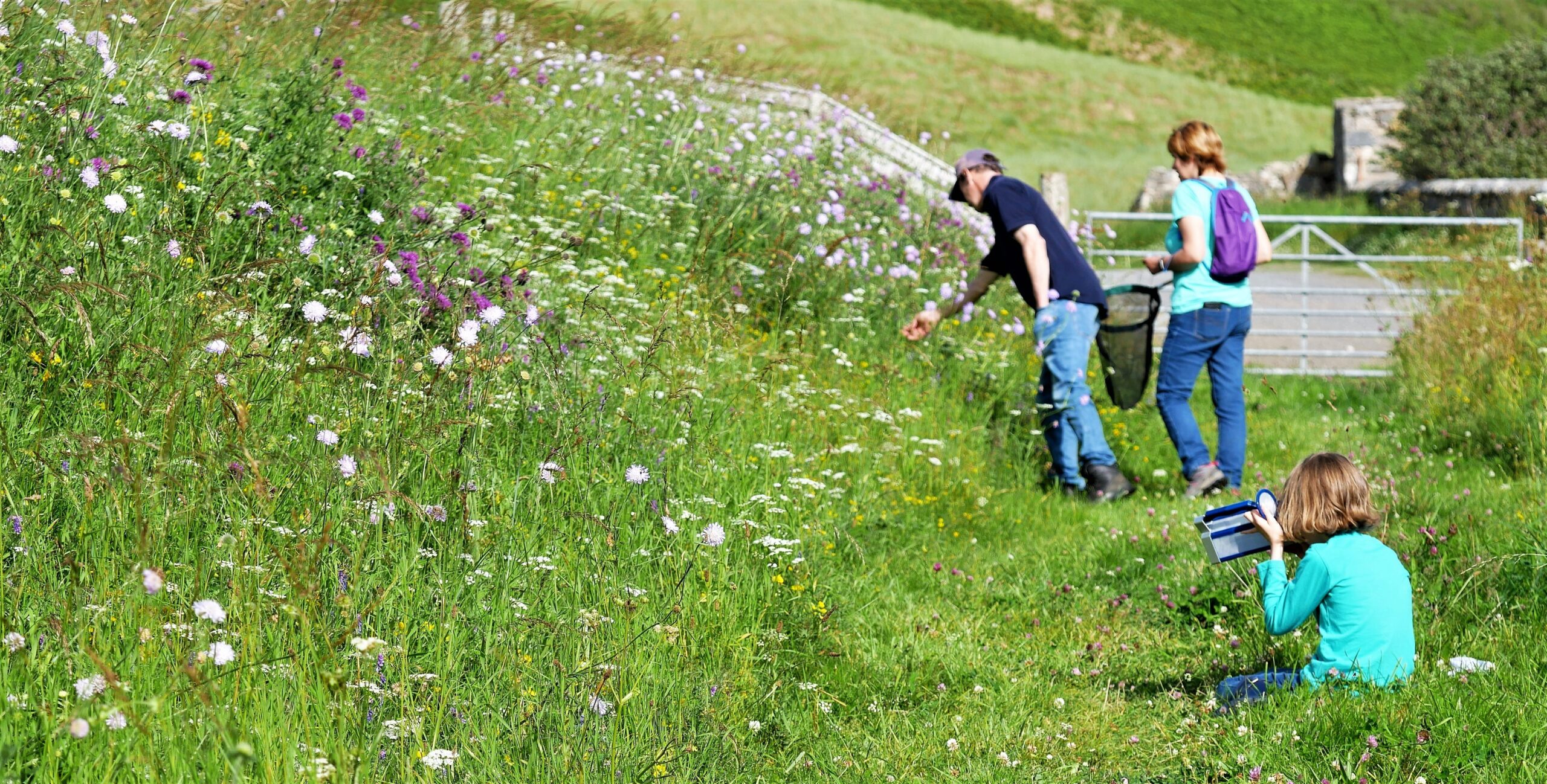Funded by Naturescot via Volunteering Matters Action Earth.
Over the summer of 2022, through to the spring of 2023, the group are running a programme to help further diversify the meadow at the Farr Glebe Bumblebee Reserve in Bettyhill.



The reserve is an important area for many bumblebees including the nationally rare great yellow bumblebee (Bombus distinguendus).
The aim is to collect seed from the meadow as it ripens through the summer and autumn of 2022.
Some of the seed will be sown directly back into the meadow in areas that are less diverse. This method is particularly important for species such as yellow rattle (Rhinanthus minor) which only grows in association with various grasses.



The remaining seed will be taken by volunteers to propagate at home.
The following spring some of the young plants will be brought back to the Farr Glebe Reserve in order to improve the less diverse areas. The remaining plants will be grown in volunteers’ gardens in order to make them more wildlife-friendly and help create a network of bumblebee friendly habitats along the coast.
For all keen plant growers and for everyone interested in how they can help with this project, the initial introduction event will be at 11.00 am on Saturday 23rd July at the Farr Glebe reserve in Bettyhill. Highlife Countryside Ranger Paul Castle will be on hand to explain the importance of the reserve and you can find out how you can aid the bumblebees of north Sutherland. You may even see one of the rarest bumblebees in the UK, the Great Yellow.
Details of our launch event can be found by clicking here.
The first seed collecting event was on the 21st August.
We spent a pleasant few hours gathering seed for our project at the Farr Glebe Bumblebee Reserve. Thanks to all who joined us and took seed for growing on. We raked in some yellow rattle seed on site and collected greater knapweed, field scabious, tufted vetch, red campion and black medic seed for growing on to plant back in the meadow in the sparser areas.
Thanks again to Volunteering Matters Action Earth for support and NatureScot for funding the project.









